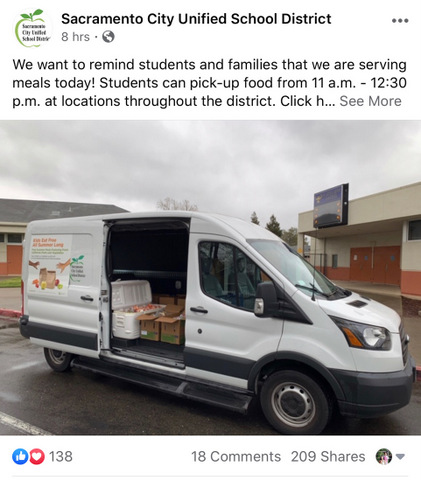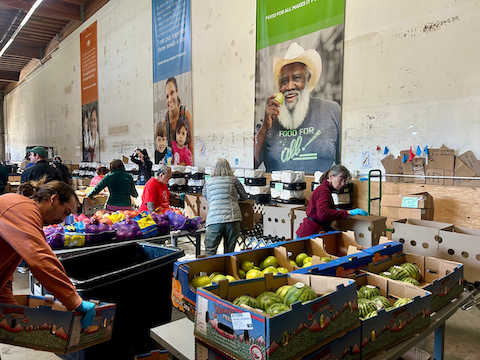
17 Mar Hit By Coronavirus Crisis, School Districts Call Time-out: Still Providing Meals

By Joe W. Bowers Jr. | California Black Media
By Sunday evening, more than 720 of the state’s 1,000 school districts announced they were closing beginning Monday. They made the decision out of an abundance of caution for the health and safety of students, parents and staff and with the intent of sharing responsibility with the broader community in an effort to slow the spread of the coronavirus.
Then, on Monday, county health officials put more than 6.7 million Californians in six Bay Area counties under a “shelter in place” order that instructed residents to stay isolated in their homes and away from public places and human interaction as much as possible.
The directive, which took effect Tuesday at 12:01 am and lasts at least through April 7, affects San Francisco, Santa Clara, San Mateo, Marin, Contra Costa and Alameda counties.
The closures are scheduled to last between two to four weeks.
In all, more than 95 percent of public school students in 41 of 58 counties will be impacted. Many of the school districts that California’s 334,652 African-American students attend have announced they will be closed.
Outside California, more than 33 states, plus the District of Columbia and Puerto Rico, have announced plans to close schools for two or three weeks.
Most of the announcements of school district closings happened on Friday, closely following the closure announcement by the two largest school districts in the state – Los Angeles Unified and San Diego Unified.
Los Angeles superintendent Austin Buetner and Cindy Marten, San Diego superintendent, issued a joint statement that read, “California has now entered a critical new phase in the fight to stop the spread of the COVID-19 pandemic. There is evidence the virus is already present in the communities we serve, and our efforts now must be aimed at preventing its spread. We believe closing the state’s two largest school districts will make an important contribution to this effort.”
Before deciding to close their schools, the districts consulted with their county offices of education and their public health departments. Many school leaders were concerned about interrupting student learning and the negative effect closures would have on the families that depend on schools to provide meals and other essential social services.
Inglewood Unified was one of the school districts making the decision to close on Friday. With a student body that is 40 percent African American, among districts with over 2,000 students, Inglewood has the largest percentage of Black students in the state. Los Angeles Unified with 8.4 percent and Oakland Unified with 24 percent respectively have the largest number of African-American students.
Dr. Erika Torres, Inglewood’s County Administrator, said she decided to close the district’s schools because, “We are concerned about the health, safety and well being of our students and families.”
“I wanted to make sure that we were very proactive in this decision,” she said.
Like many of the school districts that are closing, Inglewood has no reported cases of coronavirus among students or staff.
Even as California banned large public gatherings, Governor Newsom resisted taking steps at the state level to close schools. On Sunday, Newsom defended his approach saying, “I know for a fact that not all these districts have planned for the needs of these kids next week, and I’m deeply concerned about their health and I’m deeply concerned about their safety and I’m deeply concerned about their parents’ inability to go to work and many of those parents work in hospitals, work as firefighters, work as paramedics, work as the people that would get in gear to help us advance the mobile testing (for the virus) throughout the state.”
While school leaders were deciding to close schools last Friday, the U.S. Department of Education said it would consider waiving requirements for statewide tests that are mandated for grades 3-8 and high school. With testing set to start during the spring, it may not be feasible for districts to administer the tests if school closures are extended.
On Friday, Newsom signed an executive order announcing that California schools that close due to the coronavirus outbreak will continue to receive funding, on condition that dollars are directed toward remote learning opportunities and childcare options during workday hours. For school districts like Inglewood Unified and Oakland Unified that are paying off state loans and Los Angeles Unified, which is experiencing budget issues, the governor’s action relieves some of the fiscal strain of closing schools.
Given the rapidly changing nature of the coronavirus outbreak and CDC’s guidance, what school districts decide to do after closing for two to four weeks is in flux. It is important for all parents and students to check their District websites for updated information and follow directives from the California Department of Public Health.






No Comments